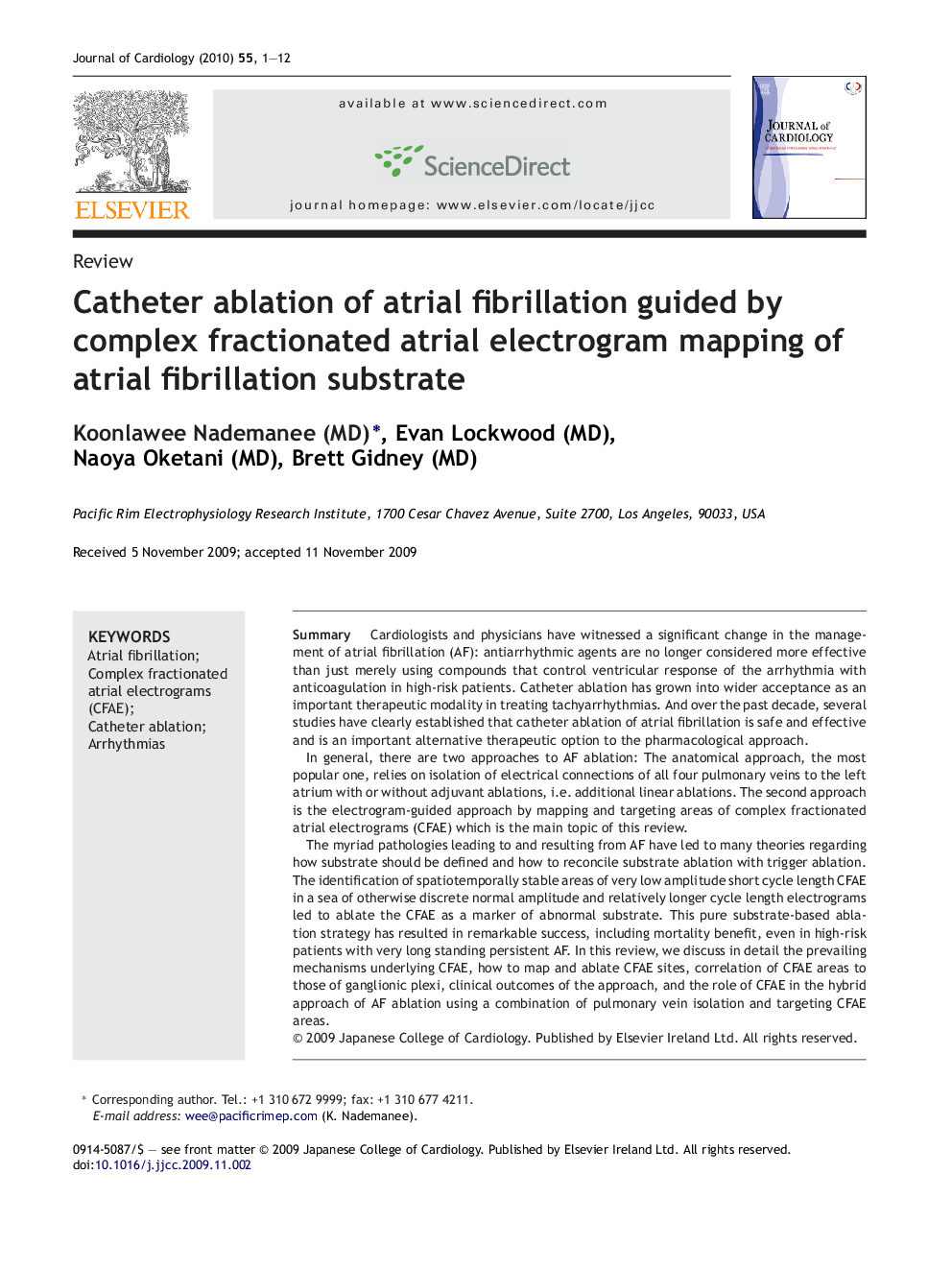| Article ID | Journal | Published Year | Pages | File Type |
|---|---|---|---|---|
| 2963467 | Journal of Cardiology | 2010 | 12 Pages |
SummaryCardiologists and physicians have witnessed a significant change in the management of atrial fibrillation (AF): antiarrhythmic agents are no longer considered more effective than just merely using compounds that control ventricular response of the arrhythmia with anticoagulation in high-risk patients. Catheter ablation has grown into wider acceptance as an important therapeutic modality in treating tachyarrhythmias. And over the past decade, several studies have clearly established that catheter ablation of atrial fibrillation is safe and effective and is an important alternative therapeutic option to the pharmacological approach.In general, there are two approaches to AF ablation: The anatomical approach, the most popular one, relies on isolation of electrical connections of all four pulmonary veins to the left atrium with or without adjuvant ablations, i.e. additional linear ablations. The second approach is the electrogram-guided approach by mapping and targeting areas of complex fractionated atrial electrograms (CFAE) which is the main topic of this review.The myriad pathologies leading to and resulting from AF have led to many theories regarding how substrate should be defined and how to reconcile substrate ablation with trigger ablation. The identification of spatiotemporally stable areas of very low amplitude short cycle length CFAE in a sea of otherwise discrete normal amplitude and relatively longer cycle length electrograms led to ablate the CFAE as a marker of abnormal substrate. This pure substrate-based ablation strategy has resulted in remarkable success, including mortality benefit, even in high-risk patients with very long standing persistent AF. In this review, we discuss in detail the prevailing mechanisms underlying CFAE, how to map and ablate CFAE sites, correlation of CFAE areas to those of ganglionic plexi, clinical outcomes of the approach, and the role of CFAE in the hybrid approach of AF ablation using a combination of pulmonary vein isolation and targeting CFAE areas.
